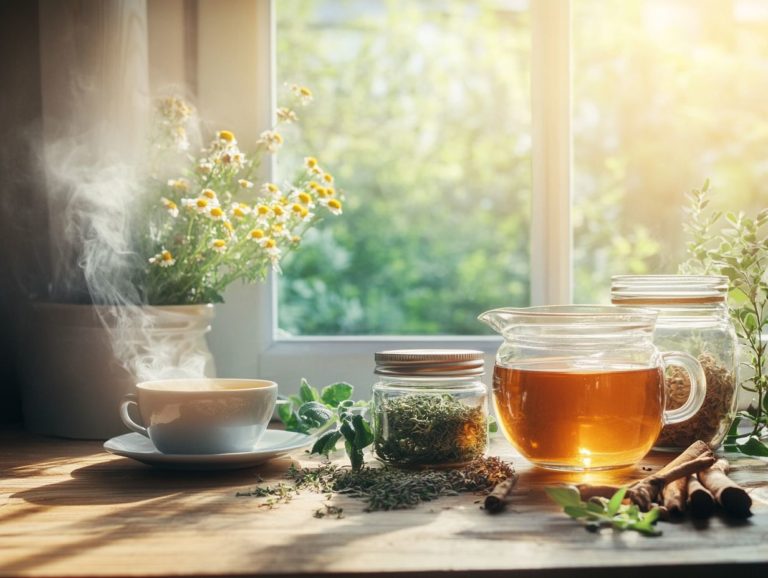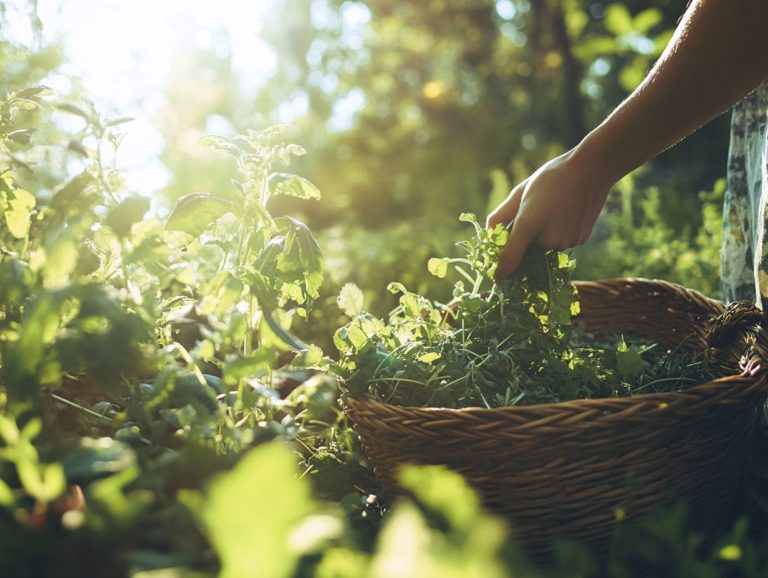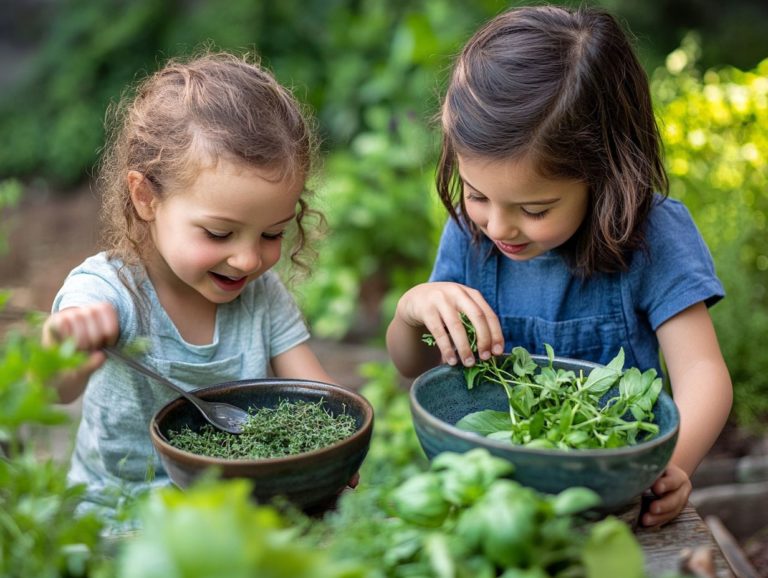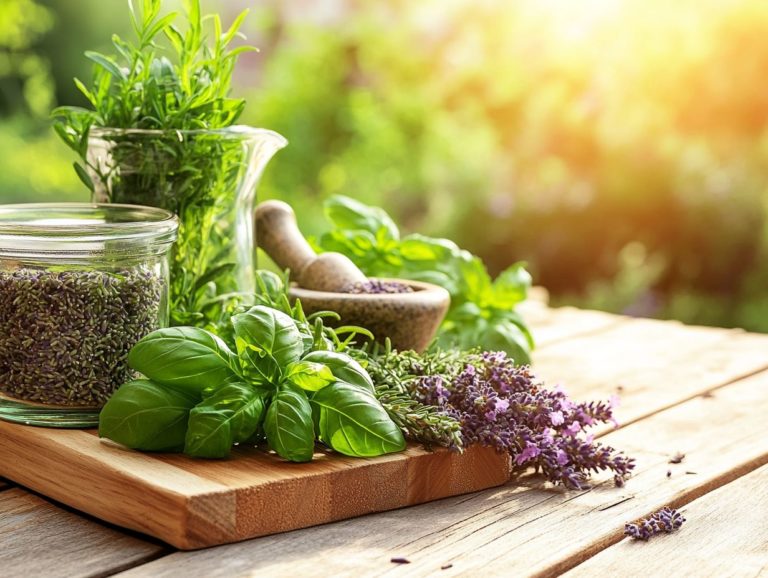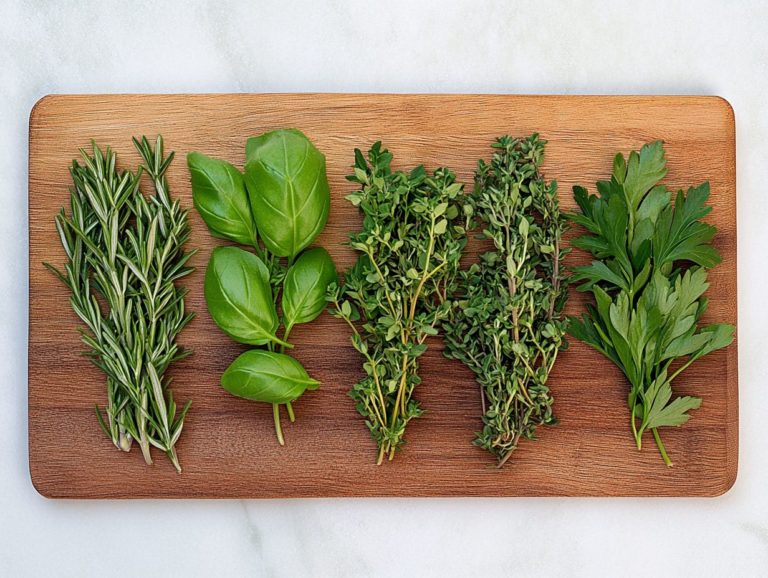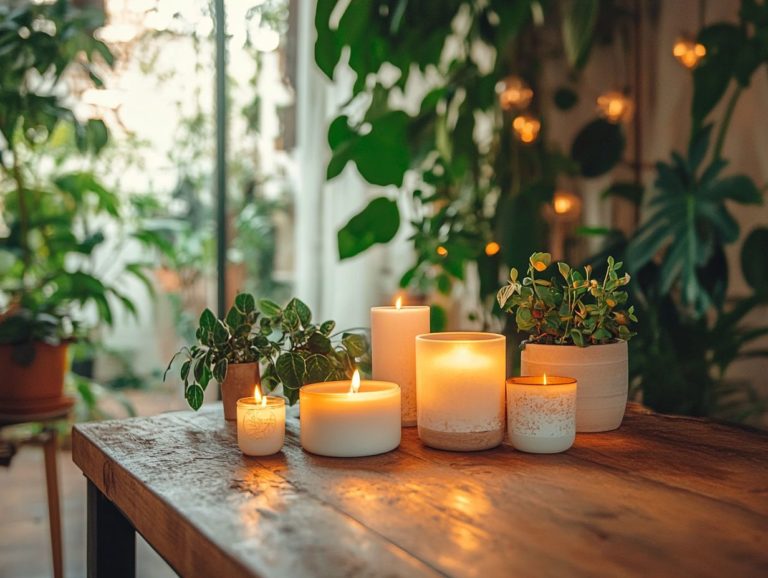A Guide to Herbal Poultices
Herbal poultices have stood the test of time as a natural remedy, seamlessly blending the healing properties of plants with the calming effects of application.
This guide delves into their rich history and the myriad benefits they offer for both physical and mental health. You will also learn about the various types crafted from readily available ingredients.
Get ready to discover a simple, step-by-step guide to making and applying these poultices safely, while highlighting important precautions to keep in mind.
Explore the potential of herbal poultices today and see how they can transform your well-being.
Contents
Key Takeaways:
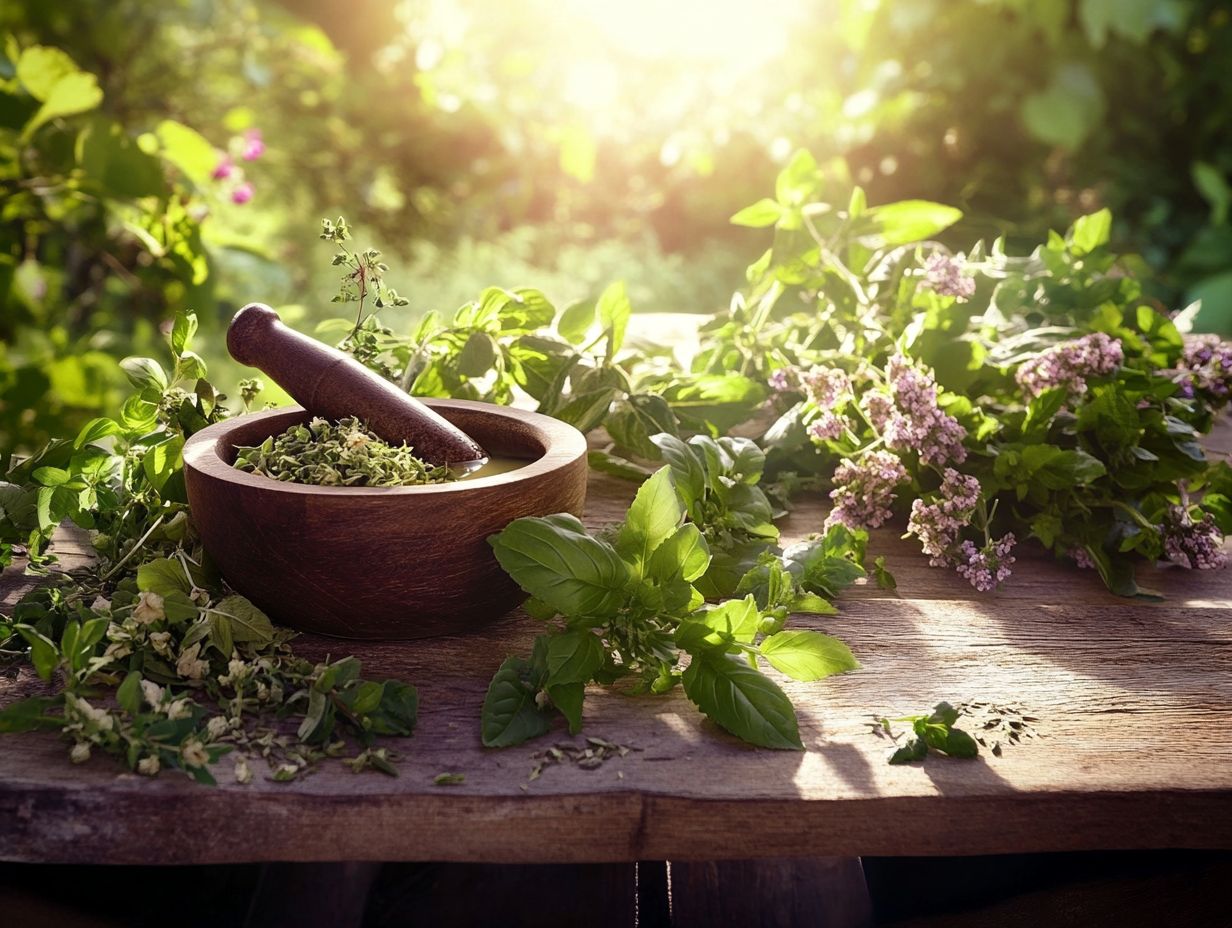
- Unlock the secrets of ancient healing with herbal poultices, used for centuries to promote physical and mental wellness.
- Experience the numerous benefits of herbal poultices, including pain relief, reduced inflammation, and improved overall health.
- Learn how to make and apply herbal poultices with common ingredients while following essential safety considerations for a safe and effective experience.
What are Herbal Poultices?
Herbal poultices represent a time-honored approach to natural wellness. They combine a blend of herbs, plants, and organic ingredients that have been cherished for centuries in traditional medicine.
These remedies offer a compelling alternative in herbalism, the practice of using plants for healing, designed to provide specific health benefits while sidestepping the side effects often linked to synthetic medications.
By leveraging the capabilities of plants like chamomile and ginger, poultices can target various conditions. They alleviate inflammation and pain while reducing anxiety and facilitating detoxification underscoring the remarkable efficacy of these natural solutions in enhancing overall well-being.
Definition and History
The concept of herbal poultices has its origins in the rich tapestry of traditional medicine practices across various cultures. Particularly in herbalism, these natural compresses have been cherished for their therapeutic effects.
These poultices boast a fascinating history, deeply rooted in Indigenous practices. Native American tribes skillfully combined local herbs to address various ailments, showcasing a profound connection to the land.
In parallel, European herbal traditions flourished as practitioners crafted mixtures from wildflowers and medicinal plants. They applied them to the skin to promote healing, reflecting both cultural wisdom and a hands-on approach to healthcare.
Through the centuries, herbal poultices have evolved, seamlessly integrating ancient wisdom with contemporary insights within modern herbal medicine. This evolution underscores their enduring significance in today s holistic healing practices, reminding us of nature’s ability to help us feel better.
Benefits of Herbal Poultices
Herbal poultices provide a wealth of benefits, acting as natural remedies for both physical ailments and mental health concerns. They truly enhance your herbal medicine practices, making them an essential component for holistic healing.
Physical and Mental Health Benefits
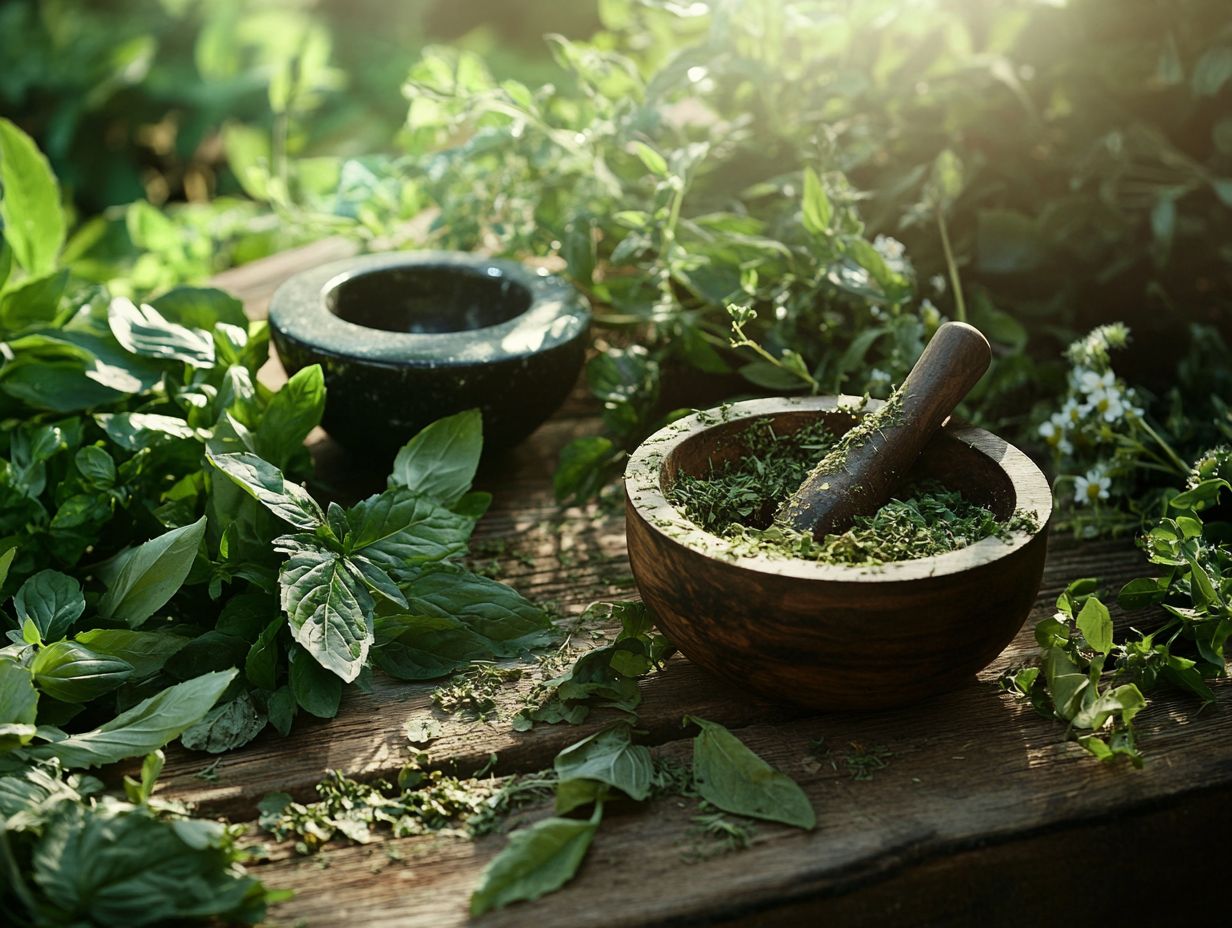
The physical and mental health benefits of herbal poultices are remarkable. They offer advantages such as reducing inflammation, pain, and alleviating anxiety and stress-related disorders.
These natural remedies often incorporate a variety of soothing herbs, each targeting specific health concerns. For instance, chamomile is renowned for its calming effects, making it a superb choice if you’re seeking relief from anxiety.
Research suggests that chamomile can enhance feelings of relaxation and improve your sleep quality.
On the other hand, ginger is celebrated for its anti-inflammatory properties. This can be especially advantageous for anyone grappling with chronic pain or arthritis.
Studies have shown that ginger can effectively reduce pain and swelling, thereby boosting your mobility and overall well-being.
By embracing these herbs in poultice applications, you can cultivate a holistic approach to health that truly harnesses the power of nature.
Types of Herbal Poultices
Herbal poultices are available in a variety of forms, each meticulously crafted to tackle specific health concerns. They utilize a distinctive blend of ingredients and herbal remedies.
Common Ingredients and Uses
Common ingredients found in herbal poultices include potent herbs like chamomile, echinacea, garlic, and ginger. Each brings its unique therapeutic benefits for various ailments.
Chamomile is renowned for its anti-inflammatory and calming effects. It s an excellent choice for soothing skin irritations. Echinacea is often linked to immune system support and can be effective in fending off colds when applied topically. Garlic is celebrated for its powerful antimicrobial properties, which help fight germs and aid in wound healing. Ginger serves as a warming agent that enhances circulation and alleviates pain.
These herbs also deliver localized relief and work in harmony with the body s natural healing processes, embodying the traditional wisdom cherished across generations.
Making and Applying Herbal Poultices
Making herbal poultices is easy and rewarding. It seamlessly blends specific herbs with a suitable base, allowing you to craft remedies for various health conditions.
This method taps into the healing potential of nature and gives you the power to take charge of your wellness journey.
Step-by-Step Guide
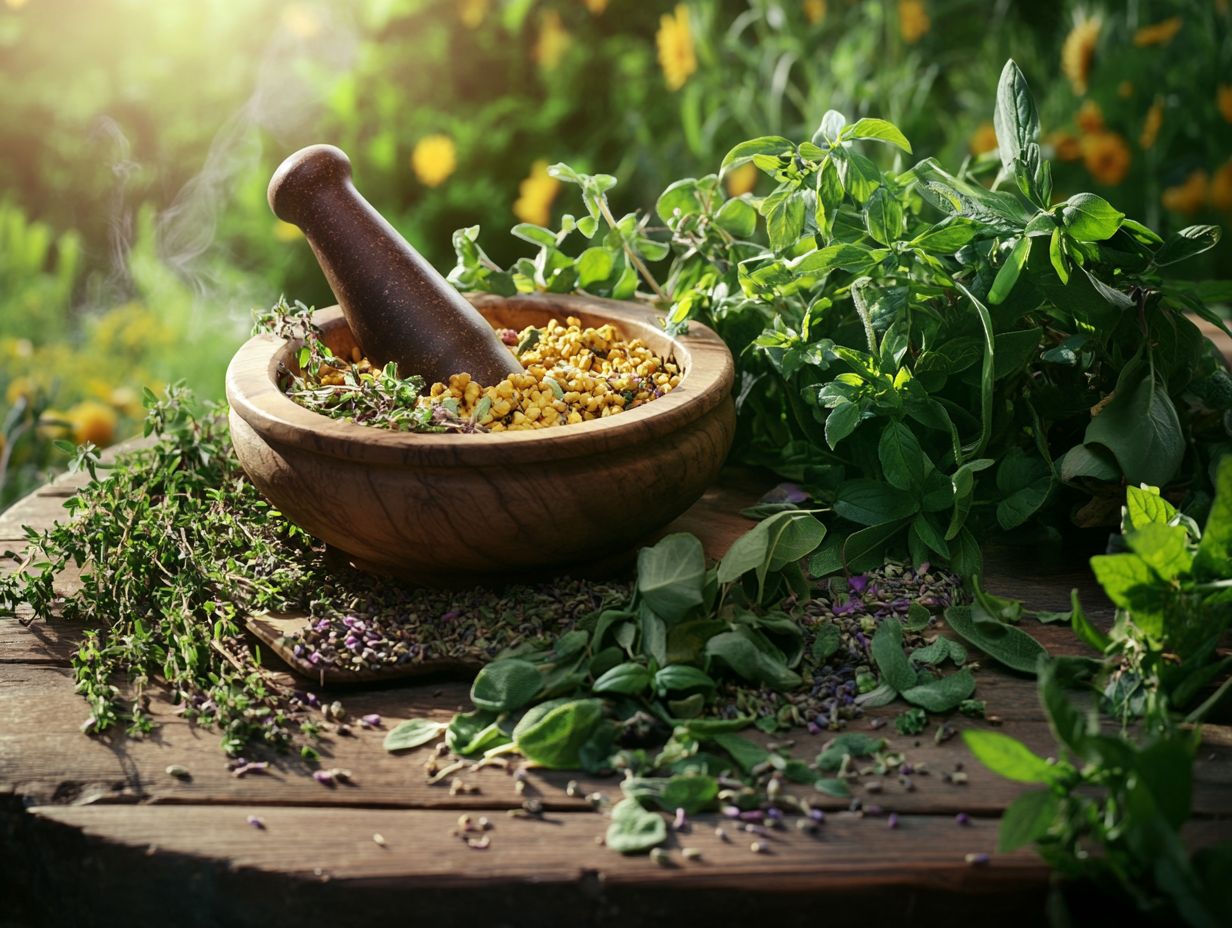
To create an effective herbal poultice, follow this step-by-step guide outlining the preparation and application process using your selected herbs.
Start by carefully choosing herbs that align with the specific ailment you wish to address. For instance, chamomile works wonders for inflammation, while ginger is your go-to for pain relief.
Once you ve gathered the right herbs, combine them with a liquid base be it water, vinegar, or even oil to activate their beneficial properties. Strive for a consistency that allows the poultice to adhere comfortably to the skin not too thick that it becomes unmanageable, nor too runny that it loses its shape.
After prepping, apply the poultice generously to the affected area, using a clean cloth or wrap to secure it in place. Consider techniques like gentle massaging to enhance absorption, providing relief while ensuring a soothing experience.
Safety Considerations
While herbal poultices are typically safe, make sure to take essential safety measures to minimize potential risks and ensure their effective use in herbal medicine.
Possible Risks and Precautions
Understanding the potential risks and precautions associated with herbal poultices is essential for ensuring a safe and effective treatment experience.
You might notice skin reactions, such as redness or irritation, particularly if you have sensitive skin or allergies. Certain herbs can trigger allergic responses, resulting in rashes or even respiratory issues. It’s vital to consider any interactions with other medications or pre-existing health conditions, as some herbs could either enhance or reduce the effects of your prescribed treatments.
Therefore, consulting with healthcare providers before using herbal poultices can give you tailored guidance that suits your unique health profile, helping mitigate potential risks while promoting your overall wellness.
Final Thoughts and Recommendations
Herbal poultices present an exciting opportunity for natural health treatments, especially when used safely and well, reinforcing their significance in holistic healing.
These poultices can help with everything from minor skin irritations to deeper tissue discomfort. By skillfully blending specific herbs with an appropriate base, you may find relief and an overall boost in well-being.
It’s important to use this remedy carefully, ensuring you fully understand each herb’s properties and any potential interactions with your existing medications. If you re thinking about trying these poultices, it s a great choice! Consulting a knowledgeable healthcare provider is a wise step.
When researched properly, herbal poultices can indeed contribute positively to holistic health, supporting both your physical and emotional wellness.
Frequently Asked Questions
Here are some common questions about herbal poultices.
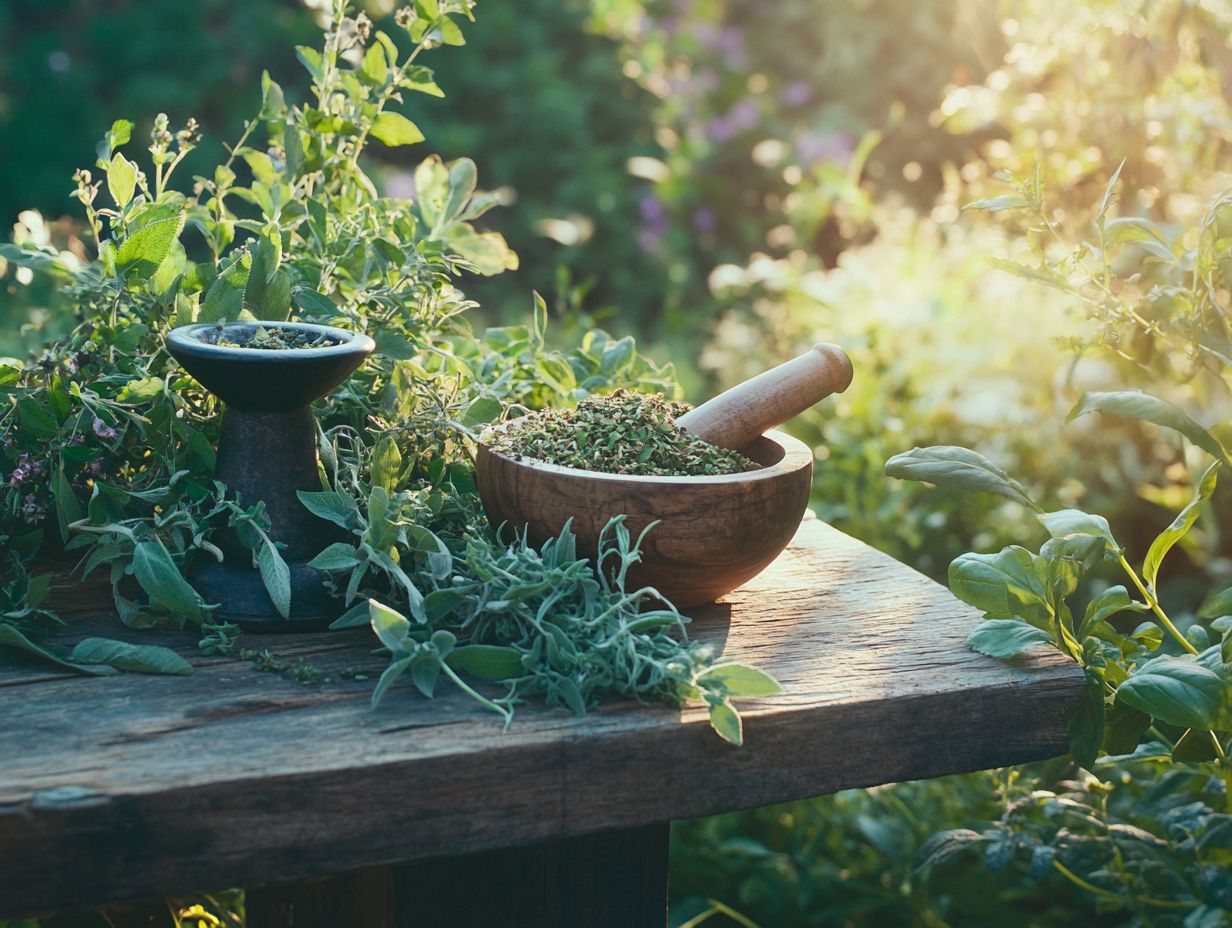
What is a herbal poultice?
A herbal poultice is a natural remedy. It involves applying a mixture of herbs, oils, and other ingredients to the skin for relief from pain, inflammation, and other ailments.
What are the benefits of using herbal poultices?
Herbal poultices treat various conditions like muscle pain, joint stiffness, headaches, and skin irritations. They can improve circulation, detoxify your body, and promote relaxation.
How do I make a herbal poultice?
First, choose your herbs and other ingredients. Grind or chop the herbs, then mix them with oil or water to make a paste.
Apply the paste to a clean cloth. Place it on the affected area for a designated time.
Are herbal poultices safe?
Yes, herbal poultices are generally safe. Do your research and consult with a healthcare professional before trying new remedies, especially if you are pregnant or have underlying conditions.
Can I use herbal poultices with other treatments?
Yes, you can combine herbal poultices with other treatments like medications or physical therapy. Always discuss this with your healthcare provider to avoid any potential interactions.
How often should I use herbal poultices?
How often you use herbal poultices depends on your individual needs and the condition being treated. Some may find relief with one application, while others might need to use it multiple times a day.
Listen to your body and follow your healthcare provider’s recommendations.

